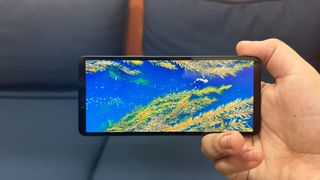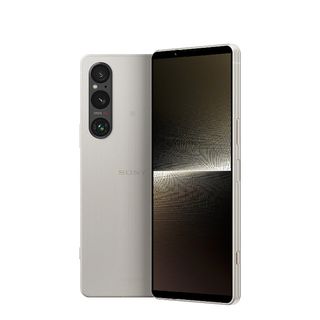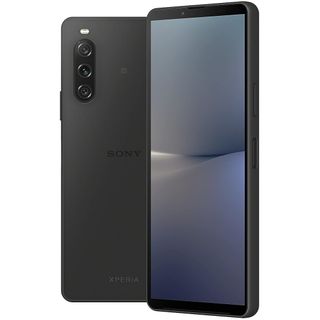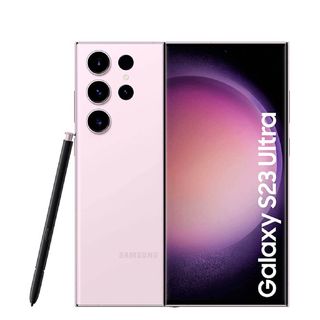
1. The list in brief
2. Best overall
3. Best Android
4. Best cheap
5. Best mid-range
6. Best Samsung
7. Also consider
8. How to choose
9. FAQ
10. How we test
11. Recent updates
The modern smartphone is the ultimate all-in-one device, but that can make choosing a new one a slightly daunting process.
Here at What Hi-Fi? we aim to simplify that process somewhat by focusing on the two areas that mean most to us and our readers: sound and vision. That doesn’t mean we spend an inordinate amount of time listening to ringtones, but our reviews do pay more attention than most to how good each phone is for watching videos and playing music.
Every phone on this list has been fully tested by What Hi-Fi?’s team of experts, and while audio and video playback are scrutinised closely, we also fully test what a phone is like to live with, including battery life, camera capabilities, and general day-to-day performance, so you can be sure that if it’s on this list it’s a good buy. You can read more about how we test smartphones at the bottom of the page.
It doesn’t matter whether you’re an Android acolyte or iOS loyalist, if you have your eye on a high-end flagship or whether you’d prefer something a little more affordable, there’s a smartphone on our list for everyone – and they all look and sound so good that you’ll want to take a longer route on your commute to make the most of them.

I’m a Staff Writer on What Hi-Fi? who has grown up with smartphones. Over the years I’ve used everything from cheap Androids to eye-wateringly pricey iPhones, witnessed the near extinction of the 3.5mm headphone port first-hand, and spent more hours watching Netflix on trains than I’d care to count, so I know what makes a good phone. I’ve since reviewed multiple generations of flagship and affordable handsets, so while my day-to-day work testing televisions and surround-sound systems means I can identify the phones with the best picture and audio performance, I also know what to look for when it comes to general usability and camera quality.
The quick list

Best overall
Apple doesn’t shout about the AV qualities of its latest iPhone, but we will – the 15 Pro Max is a brilliant all-rounder.

Best Android
If you’re looking for the most cinematic Android phone you can buy, you’ve just found it.

Best cheap
The Xperia 10 V is proof that you don’t need to spend a fortune to get brilliant mobile AV performance.

Best mid-range
Not the cheapest mid-range phone out there, but the Xperia 5 V is worth every penny.

Best Samsung
If you’re a Samsung supporter the Galaxy S23 is a solid performer that just lacks a little subtlety.
The best smartphone overall
The launch of a new iPhone is always an event for Apple. It spends an hour or so every autumn extolling the virtues of its latest phone’s upgraded processors and cameras, but barely ever mentions any improvements to its AV abilities.
That seems odd to us, especially when you consider just how good the iPhone 15 Pro Max is when it comes to music and movies. Admittedly the changes are subtle, but they are significant. Brightness has been boosted, which gives way to extra contrast and helps to give the picture more depth. In fact, everything about this 6.7-inch OLED is impressive, from the high level of detail to the way it handles motion.
The same is true of its audio performance. You’ll need an adaptor to use a pair of wired headphones, but even over Bluetooth it’s weighty, full-bodied and natural. Its Spatial Audio skills, which require compatible content and headphones, also offer a particularly cinematic experience.
Elsewhere the 15 Pro Max has everything you could want from a modern smartphone. The cameras are excellent, its A17 Pro processor is capable of running console-quality games, the battery can keep it going for two days before it needs charging, and its titanium chassis is lightweight but strong.
The iPhone 15 Pro Max doesn’t come cheap, but as a portable movie and music device it’s unbeatable.
Read our full Apple iPhone 15 Pro Max review
The best Android smartphone
No matter how good it is, some people prefer an Android-powered smartphone to Apple’s iOS, but when there are handsets as good as the Sony Xperia 1 V out there that’s hardly an issue.
While the all-round package isn’t as complete as the iPhone 15 Pro Max (above), the 1 V is arguably even more cinematic. Sony’s background in making TVs probably helps here, with a 6.5-inch 4K OLED screen that excels when it comes to detail and tangible depth, particularly when using the phone’s Creator Mode. Its 21:9 aspect ratio really adds to the experience, although it’s worth bearing in mind that video shot in other formats (and some apps) won’t fit the screen as well.
There’s wide-ranging support for audio codecs, including LDAC and Dolby Atmos, which makes the Xperia 1 V an excellent partner for both wired and wireless headphones. Music sounds natural and rich, with good handling of instrumentation, rhythm and dynamics. The built-in speakers don’t fare as well, which is hardly surprising, but thanks to the 1 V’s tall chassis there is more separation than you’d expect from a phone.
That form factor won’t be for everyone but it feels suitably premium given the price, and there are plenty of everyday features to make this more than a glorified media player. The 48MP main camera takes great snaps in pretty much all conditions, plus it has loads of tools for pro users.
The Xperia 1 V might be considered overkill unless you’re a real AV enthusiast, but that’s probably why you’re here reading this, right?
Read our full Sony Xperia 1 V review
The best cheap smartphone
The cheapest phone in Sony’s current Xperia range, the 10 V might not have the 4K screen found on the 1 V, or the premium build of the 5 V, but it still offers a brilliant on-the-go entertainment experience.
That’s thanks largely to its 6.1-inch OLED display, which has the same 21:9 aspect ratio as the rest of the Xperia range. While that can make reaching the top of the screen a little tricky for those with smaller hands, it makes for a more cinematic experience when watching videos, with excellent contrast, impressive detail, rich and nuanced colours, and a real sense of depth.
It’s also more sonically dynamic than some phones that cost far more, particularly when using the 3.5mm headphone port, but music playback over Bluetooth is also impressive thanks to its support for LDAC, Qualcomm’s aptX Adaptive codec, and Sony’s 360 Reality Audio. The built-in speakers are also much better than the ones found on the Xperia 10 IV, with a fuller sound and better bass performance.
It’s arguably elsewhere that the Sony Xperia 10 V’s budget price tag is most apparent. The Qualcomm Snapdragon 695 5G chip and 6GB of RAM work fine in day-to-day use, but there are doubts about how long that’ll last considering the age of the processor. Camera performance is also a giveaway, with slightly underwhelming photos from the triple lens setup on the back.
If you’re looking for the best budget phone available for music and movies, though, you can stop right now.
Read the full Sony Xperia 10 V review
The best mid-range smartphone
If your budget can’t quite stretch to a flagship phone but you still want something more capable than what’s available at the budget end of the market, Sony’s Android-powered Xperia 5 V is the ideal choice.
While many more affordable phones keep costs down by downgrading the screen, there are no such sacrifices here. The 6.1-inch OLED on the 5 V might not be the biggest, but it’s sharp and detailed, with excellent contrast and depth to the image. And with its 21:9 aspect ratio, it’s ideal for on-the-go movies.
The built-in speakers are a little lacking in weight, but Sony is one of the only phone manufacturers that still finds space on its handsets for a 3.5mm headphone port. With a pair plugged in you get a natural and rich sonic performance, plus there’s support for LDAC, aptX HD, aptX Adaptive, and LE Audio over Bluetooth 5.3.
In day-to-day use the pairing of Qualcomm’s Snapdragon 8 Gen 2 processor and 8GB of RAM mean it runs all your apps without a hiccup, with a 5000mAh battery to power everything.
It’s all encased in a metal and glass chassis that feels suitably premium despite the less-than-flagship price tag, with a 48MP main shooter and 12MP ultra-wide snapper on the back, and a 12MP selfie camera on the front.
It might be one of the pricier examples of a mid-range smartphone, but the Sony Xperia 5 V is worth finding those extra coins for.
Read the full Sony Xperia 5 V review
The best Samsung smartphone
Samsung is responsible for some of the best Android phones ever made and in many ways the Galaxy S23 Ultra is no different.
The build is solid, the S-Pen stylus is handy, the camera is capable of taking photographs that you’ll barely believe came out of a phone, and its under-display fingerprint sensor feels futuristic.
The 6.8-inch screen itself is also sharp and smooth, with the kind of punchy and vibrant colours that have become Samsung’s trademark, and the excellent black levels that are OLED’s. In isolation it’s a very good display for watching video on, even if some more fast-moving sequences can suffer a little from a bit of blur.
Unusually, the S23 Ultra’s speakers are the standout audio feature. They sound warm, natural and well-organised, with the phone’s sheer size contributing to a good sense of separation. While the performance when using headphones is more mechanical, there’s plenty of detail and clarity.
If you’re a Galaxy fan the S23 Ultra is unlikely to disappoint, but its biggest issue is the quality of the competition, particularly when it comes to its audio and video performance. While Samsung seems to be standing still when it comes to mobile AV, Apple and Sony continue to improve (even if they don’t always shout about it).
The Samsung Galaxy S23 Ultra is still a great phone, it just isn’t quite the best.
Read the full Samsung Galaxy S23 Ultra Review
Also consider
The best alternative smartphones we've tested:
Samsung Galaxy S24 Ultra: Samsung’s latest handset is a triumph of modern smartphone design, packed with AI-assisted features, a brilliant array of cameras, and a speedy Qualcomm Snapdragon 8 Gen 3 processor, but when it comes to sound and vision it also lacks the subtlety of the very best on this list.
Google Pixel 8 Pro: The 8 Pro is Google’s best-sounding smartphone yet, but it’s not as precise as we’d like when it comes to timing, and when watching video it lags behind our favourites due to its clumsy handling of shadows and over-enthusiastic approach to colours. As a smartphone it’s hard to fault, but the AV performance still needs work.
How to choose the best smartphone for you
Picking the right smartphone that suits your needs best is harder than it sounds, and may in fact be a trickier task than picking the best TV or headphones. You use your smartphone every day, and for many of us it houses all the integral things we need to keep our day running smoothly. This is where the essentials come into play: good battery life, a design that's comfortable to hold, and a screen that's not too big and not too small.
Many of us also acquire our smartphones through a contract, most commonly these run for 24 months, so you need to plan ahead. Will the phone you choose have a powerful enough processor and enough RAM to last for two years? Which software platform do you want: Apple's iOS that's exclusive to iPhones, or Google's Android platform that's used by the likes of Samsung, Sony and OnePlus? And does the phone have enough features to keep you going for that time, such as a versatile camera or micro SD card support to expand the memory.
However, if you're after the highest quality AV performance (as we are), then that's where things become more black and white. You'll want an OLED screen for inky blacks and vibrant colours, with a 18:9 or 21:9 aspect ratio and minimal bezels, ideal for watching content uninterrupted and as the the filmmaker intended. As standard, many phones come with either a 1080p or 1440p, or in some cases a 4K display on the highest-end models. As smartphone displays are much smaller than TVs and even tablets, they are often very pixel dense, meaning that the highest resolution isn't always paramount, so don't be put off if your handset doesn't feature the highest-spec screen.
Audio is equally important, and the audio landscape on mobile phones has changed greatly in the last few years. Many now feature a stereo speaker setup that combines a loudspeaker and earpiece to create an often impressively loud and spacious sound. However what modern smartphones giveth, they must also taketh away as is the case with the 3.5mm headphone jack, which is an endangered beast on modern devices.
With all of these key factors in mind, many see it a daunting task to pick a new phone, dreading the day their contract is up. But fear not, all of the picks above are fully approved by us, which should be enough to help you make your decision.
Smartphone FAQ
What’s the difference between iOS and Android?
Every phone has an operating system (a bit like Windows on a PC) that makes everything work and allows you to navigate to and use its features. There are two main operating systems to choose from: iOS and Android. iOS is exclusive to Apple phones, whereas Android, which was created by Google, is open-source, meaning any handset manufacturer can install it. Some even add their own skins on top and – for better or worse – preload exclusive apps.
Android tends to be more customisable than iOS, and in general Android phones are cheaper than iPhones, but the differences between the two are probably more negligible than ever these days and it usually just comes down to personal preference.
Which is better: iOS or Android?
The answer to that question is almost entirely subjective, and, unless this is your first smartphone, depends largely on which platform you’re used to. Both come with whole ecosystems of apps, cloud storage and other compatible devices, so sometimes it can feel like you’re locked into whichever one you chose initially.
At least with Android the wide-ranging list of manufacturers means you have plenty of choice when it comes to handsets, with nothing to stop you switching from Samsung to Sony or OnePlus to Google almost seamlessly.
Many Android users cite the freedom to customise as a big selling point, but there’s also something to be said for the more limited approach that Apple takes. Its tighter control over apps and services allows for a more consistent performance from and across iOS devices; with an iPhone you always know what you’re going to get.
Is resolution the most important screen spec?
Resolution is a good place to start, but having as many pixels as possible is arguably less important when you’re dealing with a display that’ll fit in your pocket, so you don’t need to worry about making sure your phone screen is 4K. Instead, look for the pixel density (or PPI, which stands for pixels per inch).
You’re going to be using your phone in all kinds of lighting conditions, so it’s also worth paying attention to the maximum brightness, which is measured in nits. The brighter the screen will go, the better it’ll be able to compete with direct sunlight, so you should be able to see it more clearly on nice days.
Refresh rate is another factor to consider. The higher the number the smoother it should feel in operation, although many phones now have screens with variable refresh rates, which change depending on what you’re asking the phone to do. That means it’ll be high when scrolling or watching video, but can be very low in order to enable an always-on mode.
All of the phones on our list have OLED screens, which tend to offer the best contrast, but cheaper phones will often use LCD instead.
How we test the best smartphones
While it’s true that smartphones aren’t our core focus at What Hi-Fi? (the clue’s in the name), the fact that they’ve become many people’s most-used item of technology, and for some the primary way they consume music and video, we think that it’s important to find out which ones are the best at doing just that.
Every product we test at What Hi-Fi? is subject to the same thorough process, which involves spending some time in our state-of-the-art testing facilities in London, Reading and Bath with our expert reviewers, but perhaps more than any other product type we also spend time with smartphones out in the real world. We use them in our day-to-day lives – while we commute, around the office, out and about at the weekends – testing every feature exhaustively.
Of course, we pay particular attention to the audio and video performance, so while it’s important to try out the camera and see how long the battery lasts, our smartphone reviews are skewed towards listening to music and watching videos. If that’s also important to you, you should read them carefully before taking the plunge on a phone that you might have to keep for the next two years or more.
Every smartphone we test is compared to its rivals, whether that’s the latest iPhone, Samsung Galaxy, or a handset from one of the newer upstarts like OnePlus, and all verdicts are the result of a collaboration that involves the whole editorial team, so you’re never getting the opinion of just one reviewer.
For more on how we test and review products, you can read our in-depth guide.
Recent updates
- 8th April 2024: Added new intro, author info, also consider, FAQ, and how we test sections.
MORE:
